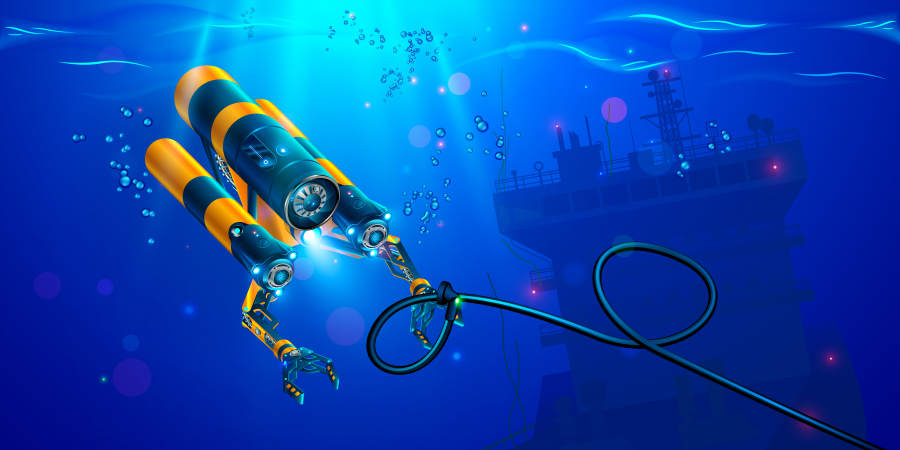Feeling at Home in the Ocean
|
|
Prof. ZHANG Fumin is Chair Professor of Electronic & Computer Engineering and Mechanical & Aerospace Engineering, and Director of the HKUST Cheng Kar-Shun Robotics Institute. He specializes in marine robotics and autonomous systems, mobile sensor and actuator networks, bio-inspired distributed active perception, and human-autonomy interaction and integration.
|
What is marine robotics and how can such technologies improve people’s lives? Those of us involved in this highly exciting and expanding area of ocean science and the blue economy believe the answer is: “In many, many different ways.”
With natural resources on land becoming depleted, people are increasingly looking to the ocean environment to answer future needs. Deepwater drilling for oil and gas, exploration of the seabed for minerals and new forms of life, and sustainable seafood farming through open ocean aquaculture are just a few examples of the many activities underway. Closer to land, seaports are getting busier, while the harvesting of wave and wind energy in coastal waters is steadily advancing.
Marine robots are indispensable to provide services and solutions to accelerate these industries as well as scientific discovery. Robots can help divers stay safe by maintaining structures on the deep sea floor. They can regularly inspect fish farms to keep stocks secure. Meanwhile, dolphin-like robots are already assisting underwater research.
The Greater Bay Area, in particular, is seeing fast-growing development of marine robotic technologies. This trend is characterized by the emergence of vibrant start-up companies to supply market demand. Applications range from environmental monitoring to ship hull cleaning, offering many novel career opportunities for engineering students.
As Director of HKUST’s interdisciplinary Cheng Kar-Shun Robotics Institute, I also look forward to the day when our graduates, as leading roboticists of the future, can assist humans in returning to our first home, the sea.
Imagine a life where some live in spacious apartments built by marine robots on the shallow seafloor and commute to land riding on autonomously driven submarines. Where electricity comes directly from wind farms and wave energy stations offshore. Where people use much less energy for heating and cooling, and never have to worry about typhoons or bad weather. Yes, today’s cellphone signals might be a problem, as electromagnetic waves cannot penetrate seawater. However, in tomorrow’s world, other means for wireless communication may have been found, such as using neutrinos to carry information.
Our first step toward realizing this dream is to make HKUST, and its wonderful coastal campus, home to world-leading marine robotic research and innovation. In the next few years, the University will improve its facilities to support the design, development, and testing of future marine technologies. Our Institute will increase awareness of marine science and technology on our campus and beyond, and develop new education programs around this theme. Look out for all these inspiring developments coming soon!
By Prof. Zhang Fumin



